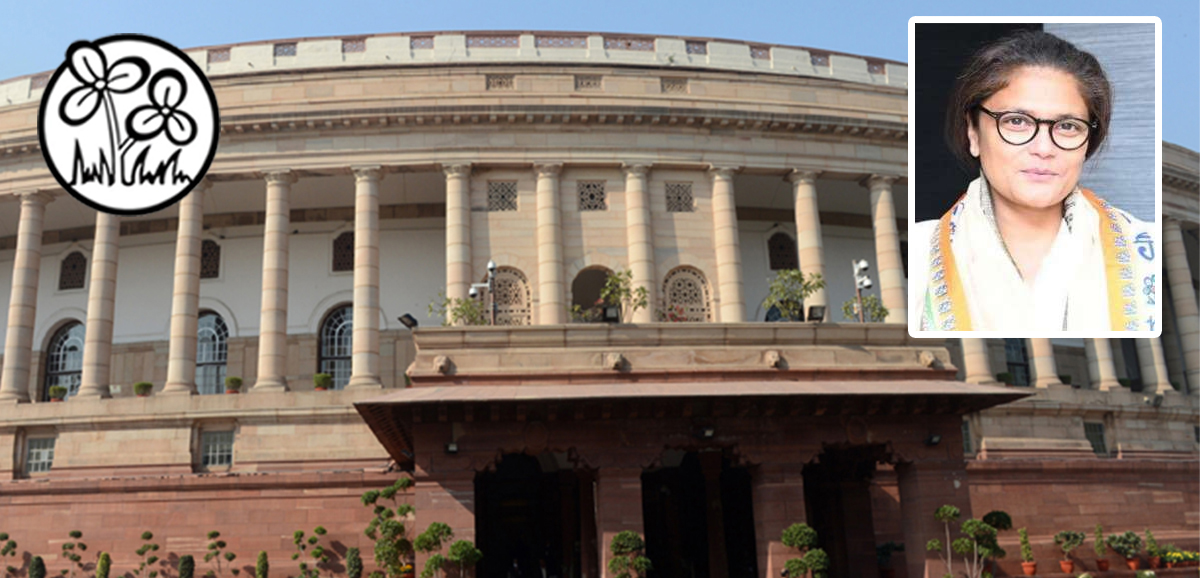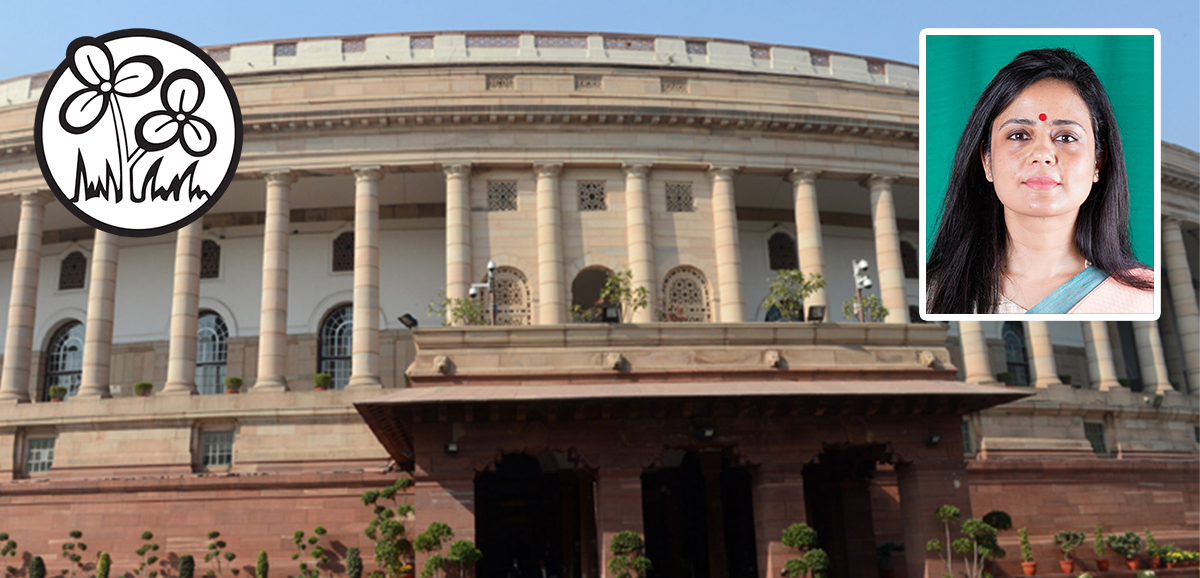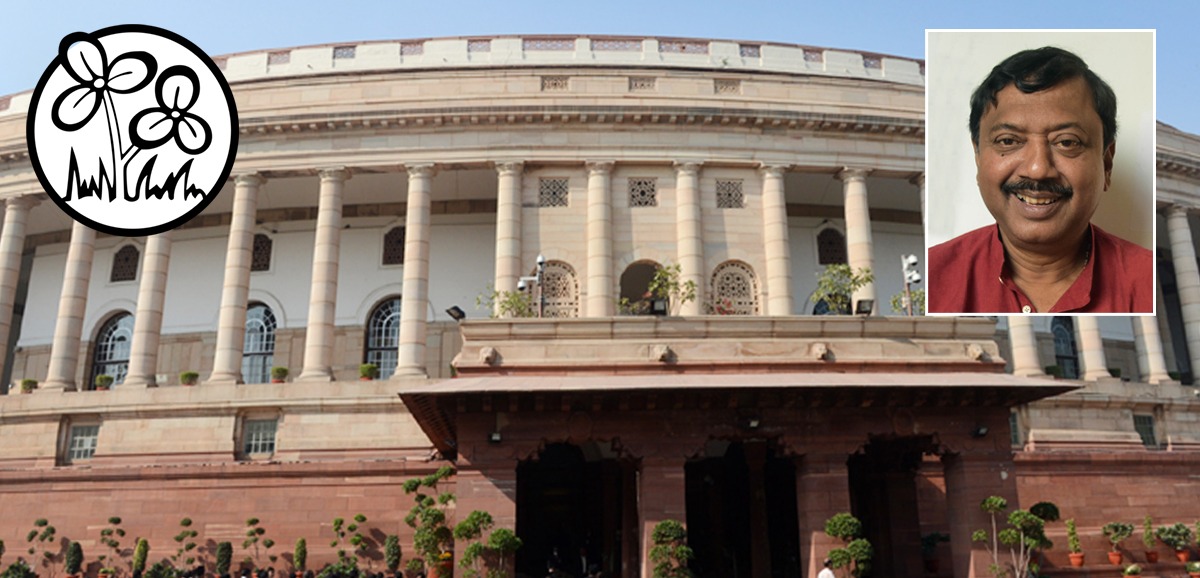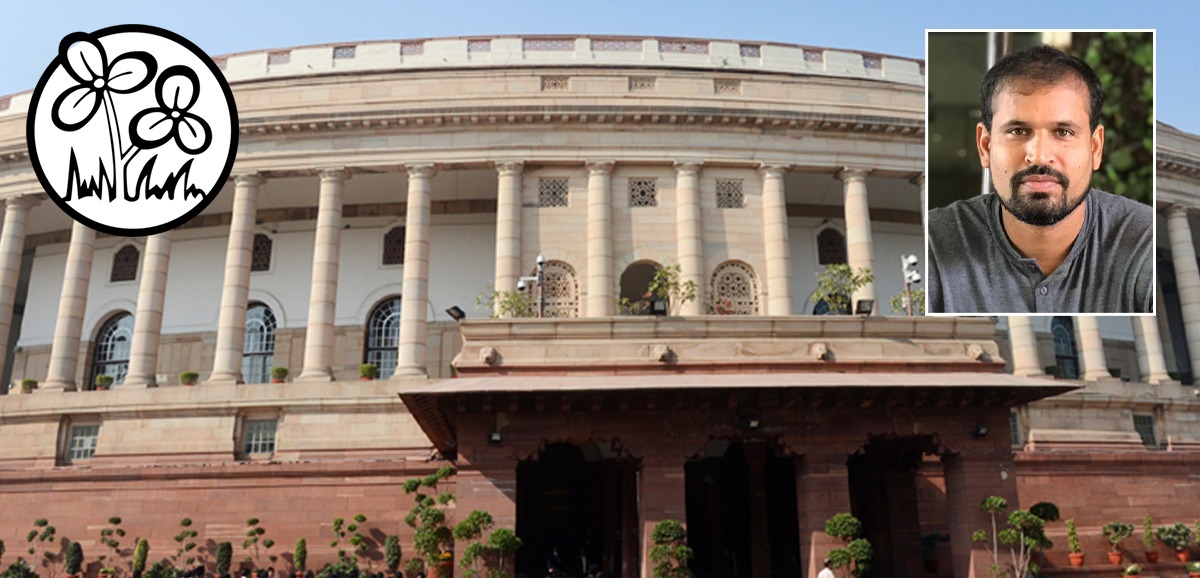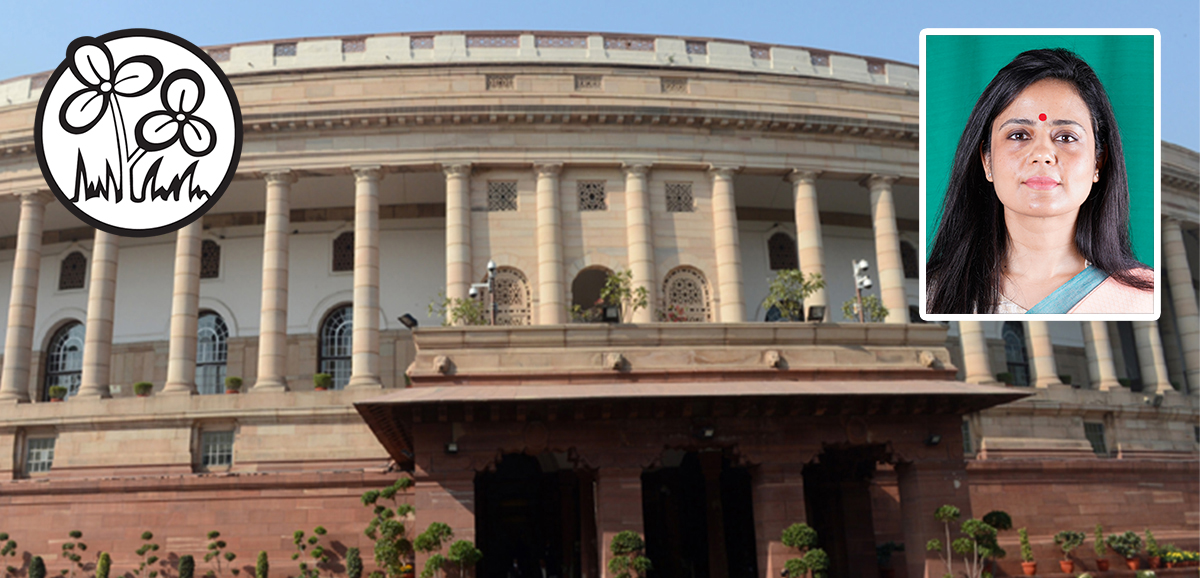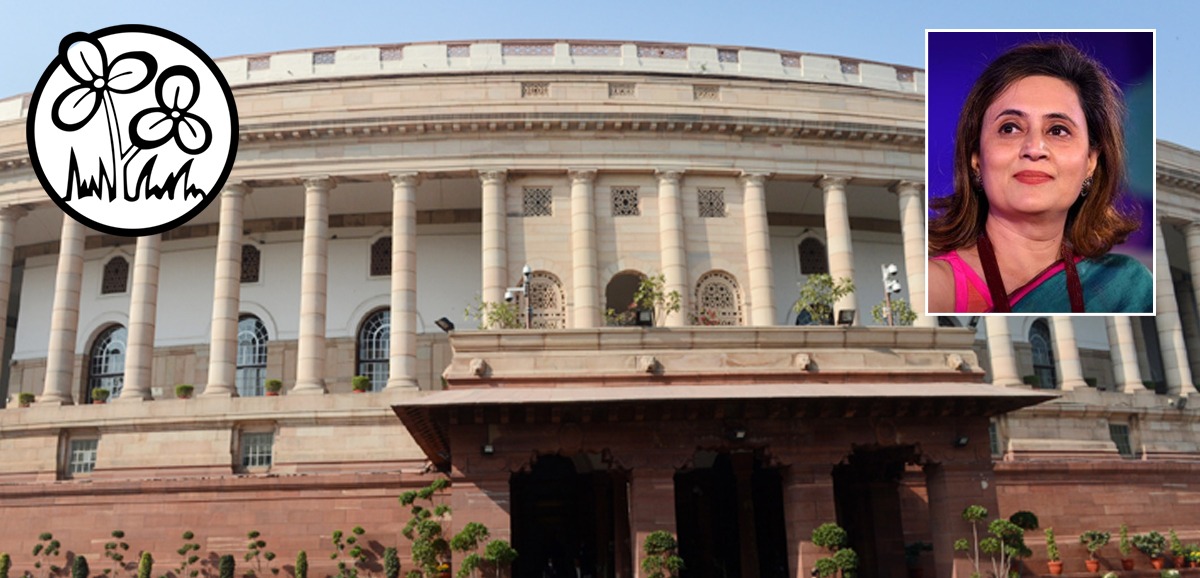Hon. Chairperson, Madam and my respected colleagues, I stand here today on behalf of my party, the AllIndia Trinamool Congress, to speak on the Finance Bill. Madam, I have to say, I am deeply pained. At the very outset. I must point something out. When we speak on the President’s Address, the hon. Prime Minister leaves the Chamber. Today, when we are speaking on the Finance Bill, the hon. Finance Minister leaves the Chamber. We, Members of the Opposition, are deeply pained by this. We hope that the Government will take notice of our pain and be present in the House each time when we speak on the relevant issues. Theodore Roosevelt, the 26th President of the United States, had said: “In any moment of decision, the best thing you can do is the right thing, the next best thing is the wrong thing, and the worst thing you can do is nothing.” The hon. Finance Minister has made a mockery of the people of India in this Union Budget by doing absolutely nothing. Whatever little changes are there are regressive and ill-thought-out. This is an illusory Budget where the Government knows fully well the mandate of 2024. This Coalition Government means that the people did not want the ‘business-as-usual’ approach. People wanted a course correction. What have you done? You have not listened to the mandate. ‘Vinash Kale Viprit Buddhi’ – you have done the exact opposite. You have kept the same Cabinet; you have kept the same Finance Minister who has given the same shoddy Budget. Who is this Budget for? The middle-class make up 31 per cent of India and the poor make up between 60 and 65 per cent of India. I will demonstrate how this Budget systematically strangles the poor and the middle-class. This is a ‘Kursi Bachao Budget’, a ‘Save-the-Chair Budget’ for this Government, and even that, it does not do very well. Broadly, there are two types of taxes, that are, Direct Taxes and Indirect Taxes. Direct Taxes are known as progressive taxes. Why are they progressive? If we talk about income tax, property tax, and investment tax on the capital gains, these are done in a way that the richer you are, the more tax you pay. So, they are kind of fairer Indirect Taxes are regressive because everyone from the richest billionaire to the poorest labourer is paying the exact same tax. So, if we talk about GST, the duties on petrol and the duties on diesel are all indirect taxes. When we strive for a fair and equitable economy, we must have the balance of Direct Taxes and Indirect Taxes right. The US and the Europe broadly collect about 60 per cent through the Direct Taxes and 40 per cent through the Indirect Taxes. Some Scandinavian States with welfare models collect 70 per cent through the Direct Taxes and 30 per cent from the Indirect Taxes. In India, it is the exact opposite. About 65 per cent of tax collection comes from the Indirect Taxes where the billionaires pay the same as the poorest labourers, and only 35 per cent comes from the Direct Taxes. Even within the Direct Tax bracket, for the first time in our country’s history, the salaried professionals and the middle class are sharing a greater tax burden than that of the rich corporates. The middle-class is contributing 55 per cent of the Direct Income Taxes under this Government, up from 38 per cent under the UPA. The richest corporates in India today contribute only 45 per cent of the Direct Taxes. Not only is the middle-class being taxed, but now with this Budget, the savings of the middle class have also been taxed with removal of indexation and with a rise in the short-term capital gains. The investors, who have made more than 11 per cent returns – we have done the calculation – that is about the threshold rate, if you have made more than 11 per cent returns, the higher returns, then this new tax regime in which the removal of indexation has happened, is good for you. Now if we talk about the people like our parents, pensioners, salaried middle-class, risk-averse people, who invested in gold, in property, in debt mutual funds, the removal of indexation has harmed them disproportionately. So, the middle-class has lost out. The Debt mutual fund holders will end up paying more than 40 per cent more tax because the indexation is being changed from 20 per cent to 12 per cent for the investments made before April 1 st, 2023. So, this is effectively penalizing those who have made low profits. People think real estate has made enormous profits. If you look at the RBI’s Housing Index for the past 10 years, the average rise in property prices has been between 4.5 per cent and 5 per cent. So, if the middle class has invested in property, that is below 11 per cent return, and thus, the indexation is going to harm you. The current GST regime is irrational and iniquitous. There is an 18 per cent GST levied on life insurance and medical insurance products. The hon. M.O.S., Finance, on Monday, told this House that the Government has collected Rs. 8,263 crore as GST on health insurance for the fiscal year 2023- 2024 alone. This is blood money. Our hon. Chief Minister, Mamata Banerjee ji wrote a letter to the hon. Finance Minister in the Centre, pointing out that this is a completely anti-people tax. What is life insurance? What is health insurance? It is protecting people, protecting against life’s uncertainties – against accident, against injury, against ill health, against death. What are you doing? You are imposing GST, which the poorest and the middle-class person has to pay, at the same rate that a billionaire pays. So, the people are deterred from taking out new policies and continuing existing insurance. This should be removed at the earliest. Let me now move on to what affects more than 70 per cent of the Indian citizens – the social sector allocations. The general trend over the past decade in every Budget in the last 10 years, of which our hon. Finance Minister has presented seven, has been in nominal terms that you have allocated more money to the social sector. But if you account food inflation, and you look at real allocations, which is inflation adjusted, the allocations have seen reductions of over 25 per cent in the past 10 years. I am going to look at real allocations that is adjusted for inflation for some major schemes in the past 10 years. The allocation to Sarva Shiksha Abhiyan is minus 18 per cent, the allocation to Rashtriya Madhyamik Shiksha Abhiyan is minus 9 per cent, the allocation to Integrated Child Development Scheme (ICDS), which affects every child as it is a school scheme, is minus 34 per cent, the allocation to Mission Anganwadi is minus 5 per cent, the allocation to PM POSHAN scheme is minus 45 per cent, the allocation to Pradhan Mantri Gramin Sadak Yojana (PMGSY), those of us who have rural areas, has been reduced minus 47 per cent in real terms, the allocation to the National Social Assistance Program is minus 20 per cent, and the allocation to the combined expenditure on five social schemes, the top five social schemes as a percentage of GDP, has declined from a peak of 0.93 per cent. So, from almost one per cent of GDP in 2009-10, do you know where is it today in 2023- 24? It is at 0.36 per cent. It is only one-third of what it was in 2009-10. Do you know where is the MAGREGA budget today? The MANREGA budget during COVID-19, when the Centre was asking all the States to give employment to the labourers as they were going back, was 0.6 per cent of the GDP. Today it is just 0.26 per cent. The specific Budget figures for 2024-25 are shameful. Let us look at the specific figures. The allocation for Samarth scheme, which is maternity entitlement and the crash scheme, has been reducedby Rs.70 crore compared to the Budget Estimates of last year. The budget for the National Social Assistance Program – again those of us from the rural areas know how important is this – is unchanged from last year, and is at Rs.9652 crore. The National Social Assistance Program is what gives social security pensions to the elderly, to single women and to the disabled. It is same as last year. There is no adjustment for inflation. The Central contribution to social security pensions has been unchangedsince 2014. It was Rs.200 in 2014; it is still Rs.200 per person today. The price of the cutlets in the Parliament canteen in the last 10 years has been adjusted for inflation with the Government’s approval. The price of the cutlets in the Parliament canteen has more than doubled. But when it comes to giving social security for the poorest of the poor, it is still Rs.200 in the last 10 years. There is no change. Under this year’s Budget allocation, there is no room for higher salaries for Anganwadi workers. Their salaries have been unchanged since 2018. There is no room for higher honorarium for Mid Day Meal cooks. You have to understand that a lot of the women in villages depend on only Anganwadi sectors and Mid Day Meal sectors for any source of employment. There has been no higher allocation for supplementary nutrition given to the children. The National Food Security Act (NFSA) mandates coverage of 67 per cent of the population through the Public Distribution System (PDS). The Prime Minister has very proudly proclaimed that this is a food surplus country. Then, why have we not increased the population covered under rations? Since 2011, you have not had a census. Since you have not had a census, you have not increased the number of people being covered under rations. Also, there is one very important question. Why is the Central Government blatantly defying the direction of the Supreme Court? We went to the Supreme Court on the migrant workers’ case. The Supreme Court gave a direct order to the Central Government that the Central Government has to give rations to eight crore migrant workers of the unorganized sector, who have been left out of the food security net. The last hearing was on 16th July 2024. The Court again said that you have to please give money to the States which have issued additional ration cards. But there is no room in the Budget for this. There is no allocation. In this rush to protect its own chair, the Government is making a very dangerous mistake that it is notgiving enough to protect our borders. Military experts have repeatedly warned us that India’s military capability has to be modernized because we are fighting on two-fronts. One is against China where we need a dissuasive deterrent, and the other is against Pakistan, where we need an offensive deterrent. The budgetary allocation for Defence in this Budget is Rs.6.22 lakh crore. There is a marginal decrease of Rs.2000 crore compared to the Revised Estimates. This year’s budget allocation for Defence is 1.9per cent of the GDP. This is the lowest since 1960. Despite many economic constraints, the past Governments had always given close to three per cent of GDP, which is a universal norm, for defence. Over the last decade, ever since this Government has been in power, it has been hovering around two per cent. We have been unable as a Government to compel China to restore status quo ante April 2020 on the Line of Actual Control. We have been unable to deter Pakistan. In the last two months alone, over 50 security personnel and about 10 civilian pilgrims have been killed in Jammu. The capital expenditure on military equipment is Rs. 1.75 lakh crore. On paper, this shows that it is almost a ten per cent increase. What we have not taken into consideration is that this increase was largely due to Russia’s inability to supply contracted weapons to us because of the Ukraine war. If we take into account the inflation and the rising dollar rate, it is almost flat. The gap between the projections made by the Armed Forces and the actual allocations is 17 to 23 per cent. That is the gap. आप कुसी बचानेमेंमस्त हैं, आप देश को भी देलखये। We need to allocate 2.5 to 3 per cent of GDP to defence. This is something that the country needs to look at. The hon. Finance Minister started off her speech by talking about the focus on annadata or farmers. How much has this Government done for the farmers? The Economic Survey of 2024 says 42.3 per cent of Indians depend on agriculture, that is, 600 million or 60 crore people. I looked at the Economy Survey presented on 22nd July very carefully. What did the headline say? The headline says ‘Agricultural sector has registered an annual average growth rate of 4.18 per cent in the last five years’, but then I needed to read and read and read, and in the fine print was written that last year, it was only 1.4 per cent. Anyway, when you compare the growth rate of 4.18 per cent over the last five years to inflation, it is nothing, but when you compare last year’s growth rate of only 1.4 per cent, what is it saying to 60 crore of our people who depend on farming? Productivity and Resilience in Agriculture was one of the first themes. It was priority number one, according to the Finance Minister’s Budget. She had made nine priorities. This was priority number one. But the provision for agriculture and allied sectors is only Rs. 1,52,000 crore whereas the provision for one Bullet Train from Ahmedabad to Mumbai is Rs. 1,08,000 crore. I would request everybody to please look at the comparison. The Finance Minister said that the priority number two is ‘Employment and Skilling’. This Government has got the worst track record of creating jobs. India has more jobs in the informal sector, not in the formal sector. The Budget is talking of an internship programme with the top 500 companies. This is a joke. The top 500 companies employ 70 lakh people in total. That is one per cent of the total workforce. Our workforce is about 57 crores. You are expecting companies, which employ 70 lakh people, to give employment to one crore interns. Please let us know how this is going to happen. I am really curious to know this. The real problem is somewhere else. The real problem is that 10.3 crore youths have basically become so dejected that they have given up looking for jobs. The Finance Minister mentions skilling loans and education loans. The skilling loans would be given to 25,000 people and the education loans would be given to one lakh people. The country has 140 crore people. What are we doing? The priority number three, according to the Finance Minister, is ‘Inclusive Human Resource Development and Social Justice’. In this section, the Budget says that they will support construction of expressways in Bihar. What you are not saying is that you will make expressways which will charge very high tolls. So, you are recovering the money; you are not doing anyone a favour. You are charging back-breaking tolls. You might give another bridge which might collapse! You will setup another power plant which, like in Jharkhand, may also be outsourced to a favourite businessman. It can be given a nice, juicy PPA and sell more imported coal. Secondly, to Andhra Pradesh, there are no grants, but only loans, that too from multilateral agencies. So, basically dollar loans will be given to Andhra Pradesh, which the future generations will have to pay back with interest. There was also another sweeping statement that grants for backward regions of Rayalaseema, Prakasam and North Coastal Andhra, as stated in the Act, will be provided. I looked into the entire Demands for Grants with a toothcomb, with a microscope and I also looked at the Expenditure Budget also. Nothing was provided anywhere. I do not see the intelligent people of Andhra Pradesh being fooled by this. The priority number four is Manufacturing and Services. The Finance Minister has devoted an entire section on how MSMEs are a priority. I believe her, and it should be a priority, but I am very confused because most medium and small enterprises are either proprietorships or partnerships. Madam, can you please explain why proprietorships and partnerships are taxed at higher rate that companies are? This makes no sense. Is the ‘A’ team the only businesses who are sending truck loads and tempo loads. MSMEs are not sending them. Is that the problem? Also, the Government needs to get rid of the bizarre Section 29A of the Insolvency and Bankruptcy Code because it is killing companies that are in trouble. It does not allow promoters to propose a resolution plan. As long as we have this Code, the promoters cannot propose a Resolution Plan. We need to get rid of this. Priority 5 in the Finance Minister’s speech is ‘Urban Development’. The Prime Minister had said every citizen will get a house by 2022. We are now in 2024 and we are still making allocations for three crore more houses. Can you please tell us how many more houses we need and when it is going to be done? Let us get this over with. Priority 6 is ‘Energy Security’. The less I speak about this, the better it is. Energy security is security for best friends. It is created by allowing best friends to import low-grade quality coal, marking it up as high-grade quality coal and selling it to the State Development Corporations at the cost of the country’s environment and at the cost of the health of our citizens Priority 7, the Finance Minister said, was ‘Infrastructure’. She announced in a true style of shagun that she is gifting the nation Rs. 1,11,111 crore. This is flat on last year. Sadly, most of this money will go towards crony capitalists. You make roads that have potholes; you will have airports that leak; and you will have bridges that fall out; and the taxpayer will pay for this. The Budget speaks of private sector participation but remember one thing. They bid out six airports to one company for a fee to be paid to the Government. Then they created a policy that allows the regulator to keep increasing the User Development Fee. So, actually, it is the flying public of India that are paying for this. Priority 8 is ‘Innovation, Research and Development’. These are just grand words. The Finance Minister seems to have forgotten that most of the entrepreneurs register their product and software IPs in foreign countries like the US since the IP registration system for patents is a complete failure in our country. Unless you fix patent registrations, this is not going to happen. The last priority she talks about is ‘Next Generation Reforms’. This is also another jumla. She says: “I propose to earmark a significant part of the 50-year interest free loan for competitive federalism.” So, this is doublespeak. They will keep this money in their pocket. If Nitish ji and Chandrababu ji see through their jumla and they make a big fuss, they will have some additional funds to keep them happy and to keep the Government going. Finally, I have to mention one interesting fact. I hope that the Treasury Benches will have the patience to hear me out. I wholly agree with the Finance Minister on one thing. The budgets for the CBI and the ED have been reduced this year and I was wondering why. Is it because the voters did not like the fact that you were using the CBI and the ED to go after the Opposition and file fake affidavits? Or, is it because you have outsourced the CBI and the ED completely to a businessman in Ahmedabad who is controlling the whole thing? Why have you reduced it? The former Maharashtra Home Minister highlighted how the BJP leaders and the agencies have threatened him to file a fake affidavit. In the case of Sandeshkali in West Bengal, the women have confirmed on video that the BJP leaders forced them to file fake statements. Similarly, I am told in my matter, on October 16, 2023 got my friend to his office in Ahmedabad and threatened him with dire consequences to file a fake affidavit. Actually, it was .. who filed the fake affidavit and forced him to sign it. Even today, every mid-level official in . office calls mid-level officials in the CBI and says: “161 स्र्टेर्टमेंर्ट्स चेंज कराइए। सर को बिुाइए। मैिम के अगेंस्र्ट मेंस्र्टेर्टमेंर्ट िीलजए।” I am telling the CBI via you, Madam, please take 161 statements once and for all. Do not keep calling back people at … behest to change 161 statements to implicate me. It is going to get you nowhere. Let us reduce the CBI and the ED budget to zero. Let Mr. Adani pay the full amount of Rs. 1,500 crore. Let us outsource it completely to him. It will be the end of the story. In short, this kursi bachao budget is a desperate attempt by the Government to stick its head in the sand and act like the mandate of 2024 never happened. But the coming days are going to prove the instability of this Government and the inefficacy of its economic policy. We wait for that day. Thank youvery much, Madam.
